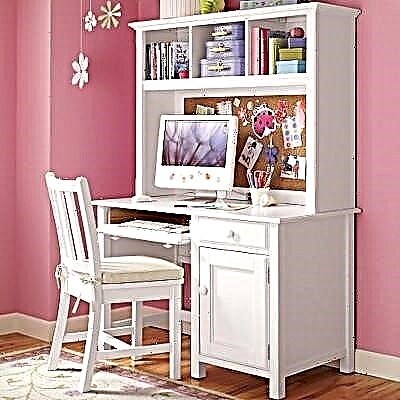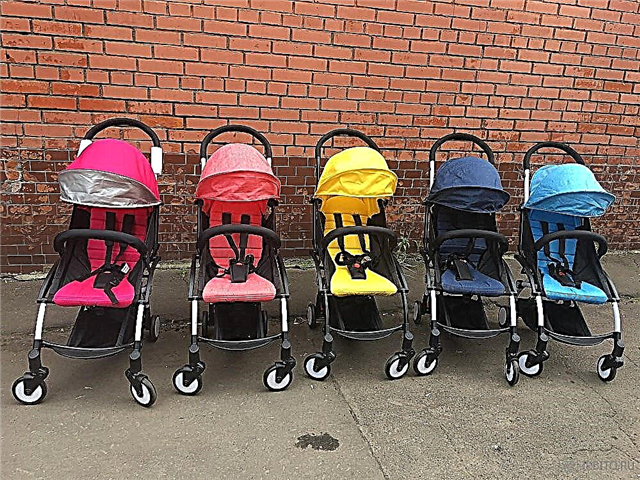Maria Montessori's technique is deservedly popular among parents. This is confirmed by a large number of specialized kindergartens and schools. If moms and dads do not have the opportunity to send a child to such a kindergarten, but there is a desire to educate him with the help of Montessori pedagogy, you can organize a developing environment at home. Today we will tell you how best to do this.
A detailed article on the methodology of Maria Montessori - Maria Montessori methodology: basic principles, advantages and disadvantages

Let's make a reservation that the home montessori class is intended for children from three years old. The basic principles and ideas of the classical Montessori method can only be realized from this age. It is a three-year-old child who begins to realize his own independence, and adults should not indicate, but gently help his development. Hence the famous slogan: "Help me do it myself!"
We divide the children's room into zones
1. Practical life
Here you should collect materials that help children develop self-care skills - buttoning buttons, tying shoelaces, cleaning clothes and shoes, washing dishes. The classic set includes:
- frames with various types of fasteners (lacing, buttons, Velcro);
- dishes;
- brushes, basins, clothespins;
- jars for transferring and transfusing;
- cleaning kits - sponges, scoop and broom.
The list of things, as you can see, is simple and straightforward. At a regular hardware store, you can buy almost everything except frames with clasps. You can make them yourself - there are many schemes for making them on the Internet. Well, here's an example of a frame (this development board is called business board, and how to make it yourself read here):

2. Sensory development
Benefits in this area help toddlers become familiar with the basic properties of objects: color, shape, weight, sounds, smells and temperature. You may have the following items in your home:
- nesting dolls, pyramids;
- sachet (pads with flavored fillings);
- beads, lego details, buttons that differ in shape and color;
- pieces of fabric (silk, satin, knitwear, etc.);
- colored cardboard of various shades;
- noise jars filled with cereals, salt;
- bottles with caps of different sizes;
- magic bags with small trinkets.
3. Mathematical zone
Exercises and objects in this zone are designed to form children's knowledge about numbers, about the main operations - addition, subtraction. We are preparing the following materials:
- rough numbers;
- wooden or plastic abacus;
- tablets or cardboard boxes with the simplest mathematical calculations;
- counting sticks;
- large beads or chips;
- lotto with numbers.
4. Language zone
This should include materials that show the form and type of writing of the letters of the Russian language. These items will help children learn to write and read. So, we place here:
- cash desks of letters and syllables;
- sets of capital and block letters;
- rough letters;
- children's literature, for example, from the series "My first books";
- a box with semolina for training fingers (squeeze and unclench the fists with rump; with the tip of your finger, first draw wavy lines, circles, and then letters);
- the pencils;
- cards with words, loto, dominoes for the development of speech.
5. Space zone
In this zone there are objects that are responsible for the formation of the child's ideas about our world, nature. You can help children by providing the following materials:
- geographic Maps;
- children's encyclopedias about animals, plants, stars, people;
- books about nature;
- a set of stones (river pebbles, beautiful stones that can be brought from trips to the lake and the sea);
- shells;
- figures and pictures of wild and domestic animals.
How to create a Montessori home environment - a few concrete steps
To practice according to the method, it is necessary to divide the nursery so that the baby can easily find and get the necessary item without your instructions. To do this, you need to put each manual in the right place, thereby dividing the room and ensuring the zoning of the room.
- Sorting... Take apart all the toys and sort them according to their intended purpose - to improve fine motor skills, sensations, speech, math skills, etc. After this sorting, you will see which materials are many and which are too few.
- Zone equipment. You need to place the manuals in such a way that they are always available to children. The best option is shelves or plastic shelves for the growth of the baby. However, do not forget about safety rules - you should play with small objects that a child can swallow under your control.
- Acquisition. Of course, a lot of materials will be required. You can purchase ready-made manuals (this is quite expensive), find analogs in hardware stores, or make your own.
Photos of examples of rooms equipped according to the Montessori method:



DIY Montessori materials
Making developmental aids at home does not take much time, saves significant amounts of money, because it is done from improvised or even unnecessary materials. Here are just a few simple options.
- Tissue box... Pick up two pieces of fabric of different textures. Put them in a box, having previously demonstrated and letting the child touch. The goal of the task is to get the same flaps out of the box by touch.
- Magic bag. Sew a small bag, place there 10 small objects familiar to the baby and ask, with his eyes closed, to determine what he is pulling out of the tactile bag. Another option for the task is to offer to get a certain thing: a spoon, a button, a keg from a loto.
- Fragrant sachet. Make a sachet filled with herbs, dried orange peel, and coffee beans. For pillows, baby cotton socks are suitable. Teach toddlers to recognize and recognize different scents.
- Caps. Take six jars with lids, different in size and volume. Open the lids and place all items in one large container. Have the children match each jar with a matching lid.
- Rough letters. Print out the alphabet - vowels on red paper and consonants on blue. Glue them onto thick cardboard and place them under a press. Cover the contour with PVA glue, sprinkle with semolina on top, and then dry. After drying, apply another layer of PVA to secure the semolina. Using the same scheme, you can make rough numbers.
So, you have done the work on zoning the room and creating a home developmental environment, but you should not stop there. Be sure to purchase parenting literature that details specific Montessori exercises: “Geniuses are taught from birth. Montessori system at home "," Practical Montessori Pedagogy: a book for teachers and parents ", books from the series" Montessori Home School ".
A useful book to help you - 60 lessons with a child using the Montessori method
And one more important note. While studying with the baby at home, do not forget that children should move on to a new task only after completing the previous one and returning the work material to its place!
We read about other popular methods of raising children -https://razvitie-krohi.ru/psihologiya-detey/10-naibolee-effektivnyih-metodik-vospitaniya-detey.html



